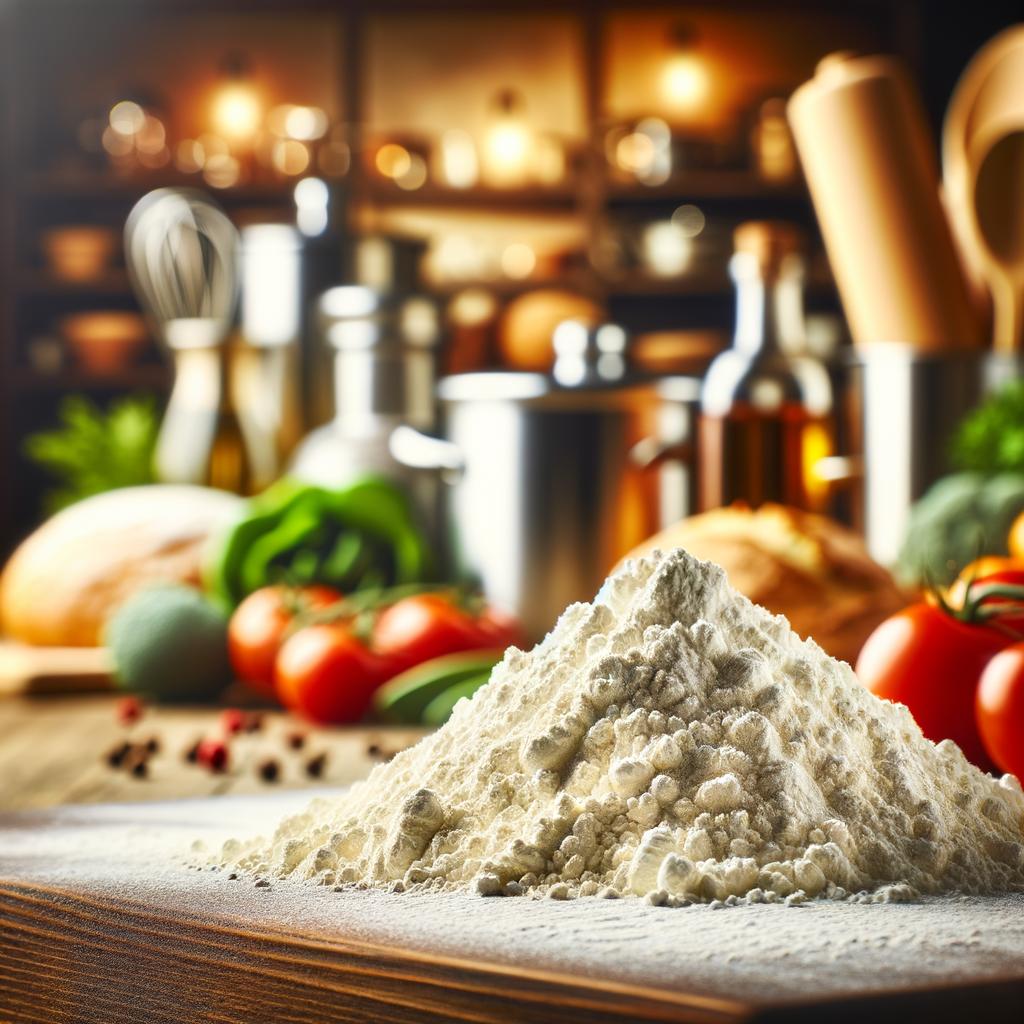Bread Flour

Description
Bread flour, also known as strong flour, is the unsung hero of the baking world. It carries an unassuming appearance, with its fine, powdery consistency and a color that ranges from off-white to creamy yellow. To the touch, it feels soft and silky, a tactile delight that promises the creation of something truly special. The flavor profile of bread flour is mild and neutral, yet it possesses the unique ability to transform, through the alchemy of baking, into creations with a myriad of tastes and textures. What sets bread flour apart from other flours is its high protein content, particularly gluten, which gives bread its characteristic chewiness and structure.
Primary Uses
Bread flour is the backbone of many a baker's creations. It is most commonly used to make yeast breads, where its high protein content allows for strong gluten development, creating breads that are light, airy, and chewy. It's a key component in a variety of cuisines, from the crusty baguettes of France to the soft pretzels of Germany, and the fluffy naan bread of India. While its primary use is culinary, bread flour also has a role in certain cultural practices, such as the making of salt dough ornaments in various cultures.
History
Bread flour's history is as rich and varied as the breads it creates. It traces its origins back to ancient times when the first grains were ground into a rough flour. Over time, milling techniques improved and the concept of 'strong' flour, high in protein, was born. The use of bread flour has evolved over centuries, from basic flatbreads to the complex artisan loaves we know today. There's a romantic notion in the idea of this humble ingredient, unchanged in its essence, being a constant companion to humanity's culinary journey. One intriguing folklore associated with bread flour is the French tradition of marking a cross on a loaf before baking, believed to ward off evil spirits.
Nutritional Information
Bread flour is not just a culinary delight, but also a nutritional one. It's a good source of protein due to its high gluten content. It also contains essential minerals such as iron, which is crucial for blood health, and magnesium, which supports nerve and muscle function. Compared to all-purpose flour, bread flour has a slightly higher protein content, making it a better choice for those seeking to increase their protein intake. However, because of its high gluten content, it may not be suitable for those with gluten intolerance or celiac disease. As with all foods, moderation and balance are key to enjoying the benefits of bread flour.

